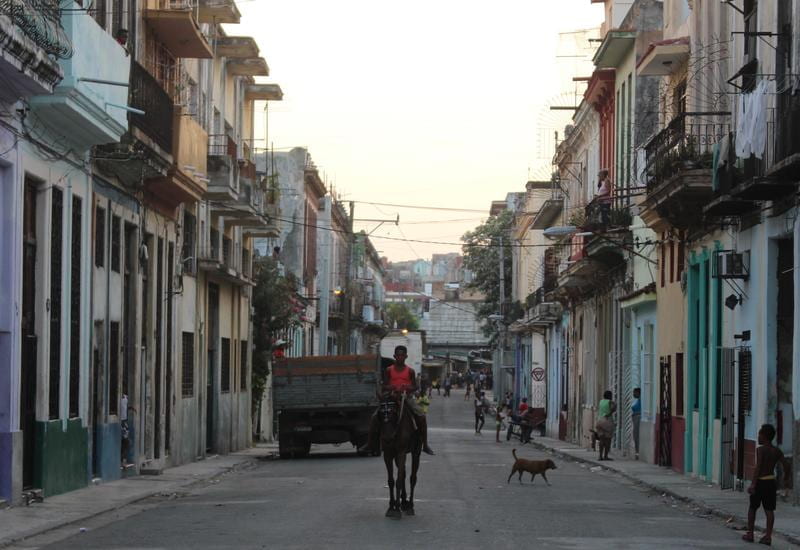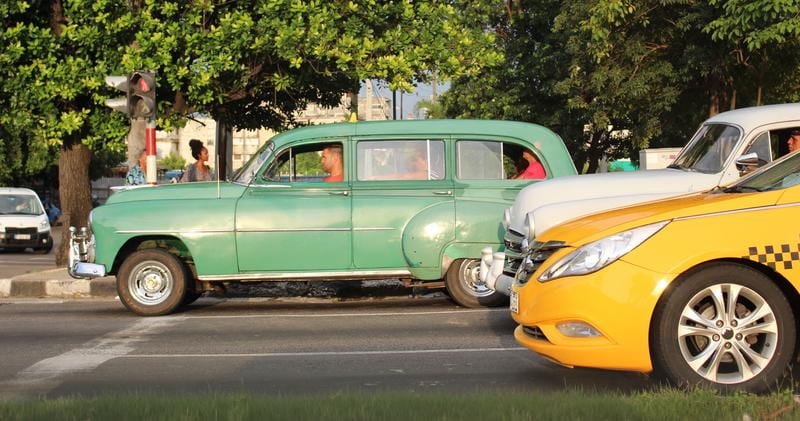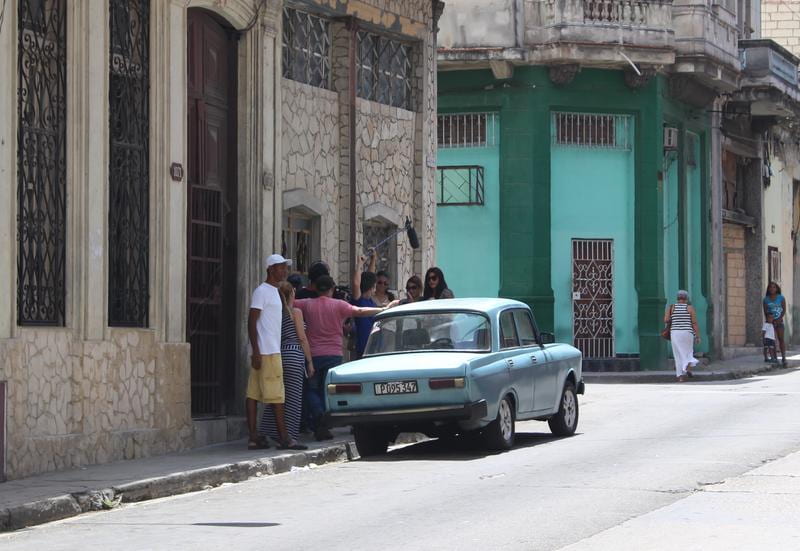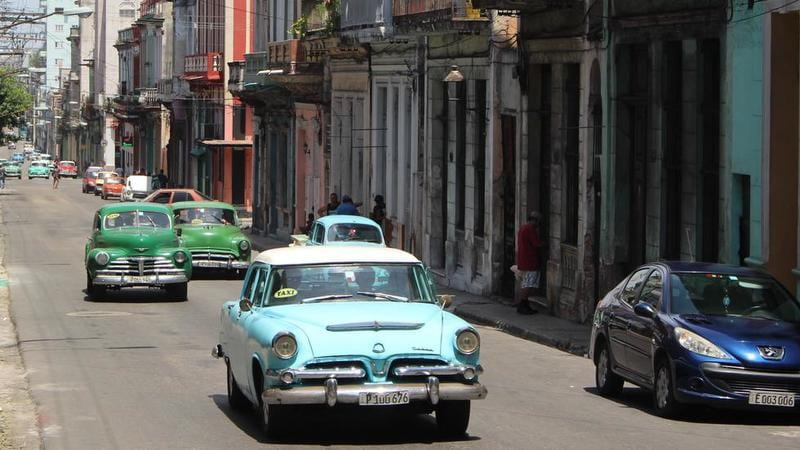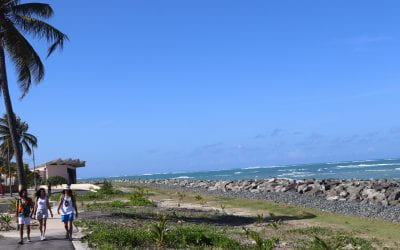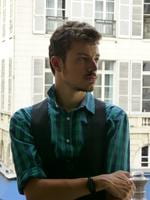
About the Author
Jose A. De Leon is a Ph.D. candidate in Romance Languages and Literatures at Harvard and has been a Real Colegio Complutense Fellow since 2017. He writes about the late 1960s in Cuba and its importance for contemporary political and aesthetic theory. He can be reached at deleongonzalez@g.harvard.edu
The Moving Landscapes of Cuba
I originally wrote this piece in the summer of 2017. Although my main points were theoretical and thus I think remain valid ––that Cuba’s vehicle fleet is a material site that can be read in geopolitical and historical terms; and that it then can and has been ideologically reinterpreted culturally–– things have changed quite a bit in the island’s roads.
In spite of the much true platitude of the country’s tendency to change slowly, what I wrote back then is now proven transcendental albeit circumstantial and past, for several policies have fast-paced followed in the years since to put an end to the problems in transportation and public discontent that the text describes.
Route-taxis in Havana, for instance, are no longer identified by the flashy colors of mid-century, American cars privately owned and exploited but by officially licensed white-and-yellow vans or buses. The lines between private and public transportation have shifted and continue to do so as policies keep trying to be better tuned to the everyday, upbeat music of the moving landscapes in Cuba.
If only as yet another warning of difference to tourist and newcomers to things Cuban, this article might still be useful today.
He kept referring to the largest country in the world, throughout a fifteen-minutes conversation from Centro Havana to El Morro, as “la Unión Soviética.” A lapsus linguae I had already heard a couple of times in an island that might lack much, but certainly not geopolitical awareness. This cab driver had somehow stuck to the name of what in Cuba was called, for about thirty years, the “eternal friend;” the work or study destination for many, and the origin of many ideas and goods, such as the Lada car he was driving me in. “It was an award I received during a socialist emulation in the sugar mill I used to work in,” he answered to what in other countries would have been considered an impertinent questioning. “During the nineties many insisted I exchanged it for an old American carro, a hook for tourists in search for taxis, but I won’t let go of my reliable Lada for anything in the world,” he concluded, suggesting that his geographic confusion had more to do with nostalgia for pre planned-obsolescence times than for the times of omniscient central planning.
As silence grows after President Trump announced his restrictive measures towards Cuba last June, the image of a “modernizing” country gets blurrier, less enthusiastic. An image some had pictured as the future coexistence of old Chevrolets with brand new Fords. For the Cuban landscape could be characterized, in the terms of a tourist imagination, with the omnipresence of sturdy, colorful, and extravagant classic American cars. And yet it is the Russian automobile ––Ladas, Moskvitch, and Volgas–– that reigns here. Even the engines that propel the almendrones, kept secretly under re-painted hoods, are, more often than not, Soviet. Thus, albeit not the only one, the Lada car might very well be the clearest sign in the Cuban landscape that America is far from being the new amigo eterno of Cubans.
An improved version of the Italian Fiat 124, Americans were promptly forbidden to import it, but almost anyone from a Third-World country, where exports were successful, would at least have the memory of a Lada taxi, a friend’s 1200, a neighbor’s Zhiguli. Even British workers kept buying them ––in spite of a bad reputation built by and encapsulated in caustic pieces of British humor–– until the now-privatized Russian company stopped production in 2010, forty years after its inception. Still, the company keeps producing spare pieces, which Cubans acquire, cheaper than at home, in visa-free travels to Russia or in stores cleverly established in Florida. Used European cars made its way into the island after purchase regulations changed in 2011, and Chinese makers seem to be the ones that slowly modernize the car population lately. From China too are the Yutong buses that substituted in 2007 the iconic camellos (truck-towed buses) from the Special Period. Classic cars from the United States are, actually, less linked to tourism and global capital than it may seem. Most of them, kept in the island thanks to an early prohibition to their being exported, run as route taxis for the local people, in Cuban currency, and with Russian parts. And not even in the whole of the island: people in Santiago move around in MZ motorbikes, fabricated in East Germany at least 30 years ago, which now serve as taxis.
It is precisely a new regulation of the duties of freelance taxi drivers by the government of Havana last February the most recent socialist measure in a country whose legislation is only mentioned abroad when concerned with the advancement of economic liberalization. The resistance of the boteros to comply with the law of prices was evident to everyone and continued well into the month of May, when I left the island. Every corner of every street where taxis do their route became an effervescent point of discussion, with people taking sides between the rights of the drivers and the authority of the State; or ––as I heard other times in a slightly different phrasing–– between a profitable price for long trips and the defense of the passengers’ rights to get to their destination.
Cuba’s moving landscape, with its remains of the Golden Age of Capitalism and its alternatives from the Socialist block caused, as could be expected, a wave of cultural productions that can be compared to Germany’s Ostalgie or the Yugo-nostalgia. The documentary Los bolos en Cuba y una eterna amistad (2011), by Emilio Colina, deals with the remains of the Cuban-Soviet relations, their cooperation and their misunderstandings, focusing on people’s affects towards material culture from that time. Similarly, Colina’s other recent documentary La vaca de mármol (2013) or Carlos Machado’s drama La obra del siglo (2015) revisit agricultural and nuclear projects that promised food and energetic solutions that dramatically ended during the 1990s “Periodo Especial.”
But nostalgia cannot be the word that completely explains my taxi driver’s fixation with a country’s name, nor the reality of a city landscape that refuses its reduction to an idealize image of the 1950s that ignores, precisely, why there were no American cars of the 1960s. If there is any truth behind a supposed Cuban rhythm of their own, it has nothing to do with Caribbean laziness or with a frozen history, but with a different combination of the old and the new. One based not in the purchase capacities of its people or the global development of market networks, but with the stubborn loyalty to a social landscape ––conservation, recycling, restrictions–– in the midst of economic war and ideological depreciations. If your Lada keeps running, why forgetting its maker? What once was a quality car for workers, today is the smoky and reliable transportation of the World’s sole sustainable country.
For many tourists, taxi drivers become their first true friends in the island and the source of Cuban truths. In my case, his name is Castillo, a voluntary combatant in the Ethiopian Civil War and ex-executive of a State-owned enterprise who now owns a small cafetería in San Miguel del Padrón neighborhood and a green Volkswagen Beetle. I must have driven about a dozen times from and to Havana’s airport with him, but the first times the ride was, actually, on another Lada. A 2107 model, also green, which ––as he told me in the cramped position his stout body takes when driving the Beetle–– has become the most wanted car in Cuba. It is a warning to shortsighted visitors: the static country expected by the foreign is, like its cars, a moving landscape which might reveal the static judgment of a blushed ideologue.
More Student Views
Weapons of Mass Construction: Building a Puerto Rico for the People
I zip up my raincoat and turn on my headlamp as we tread along a damp trail in El Yunque National Rainforest, Puerto Rico.
Climbing the Tepozteco: Meditations on Mexico
English + Español
With sweat trickling down my forehead, I meditated on the question: What does motivation look like?
Cultivating Resilience in Puerto Rico: Harvesting Fields of Change
As a born and raised Puerto Rican, my journey has always been intertwined with my homeland’s vibrant hues and resilient spirit.

